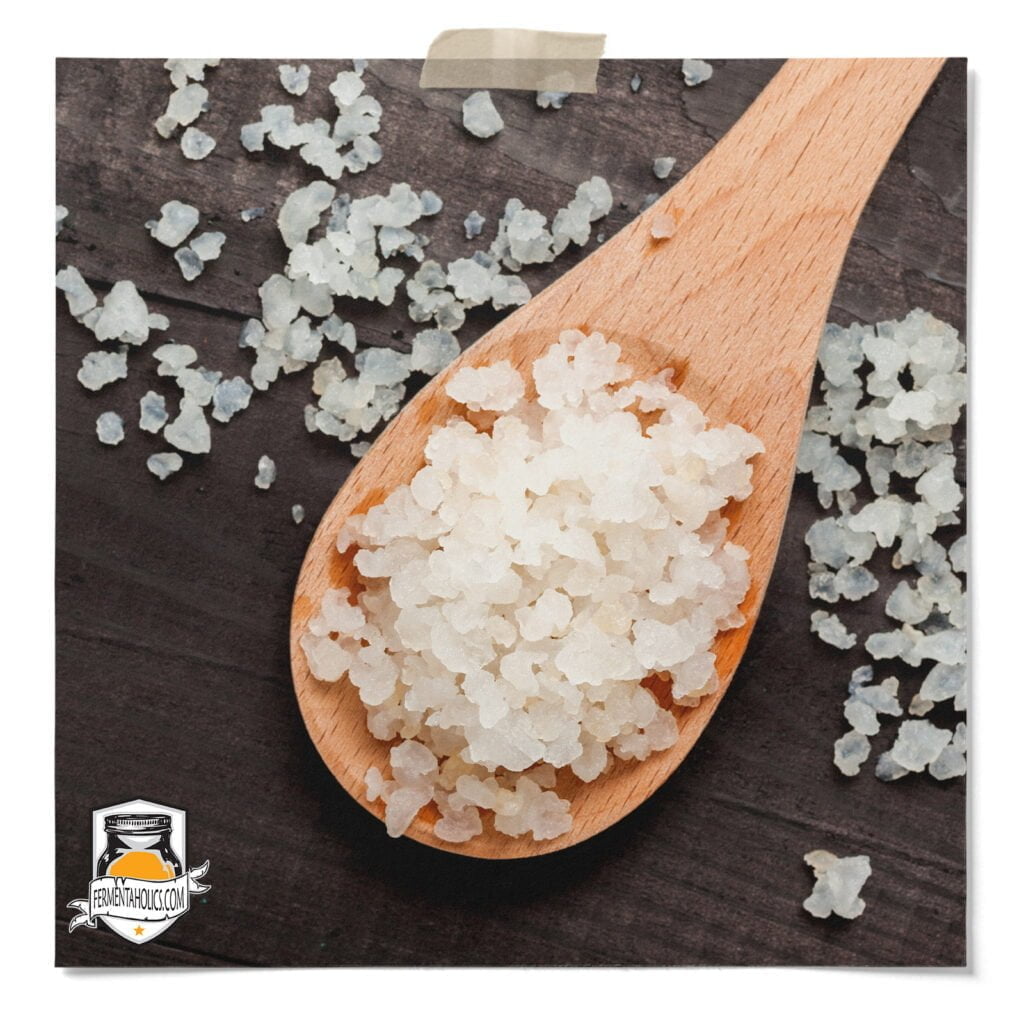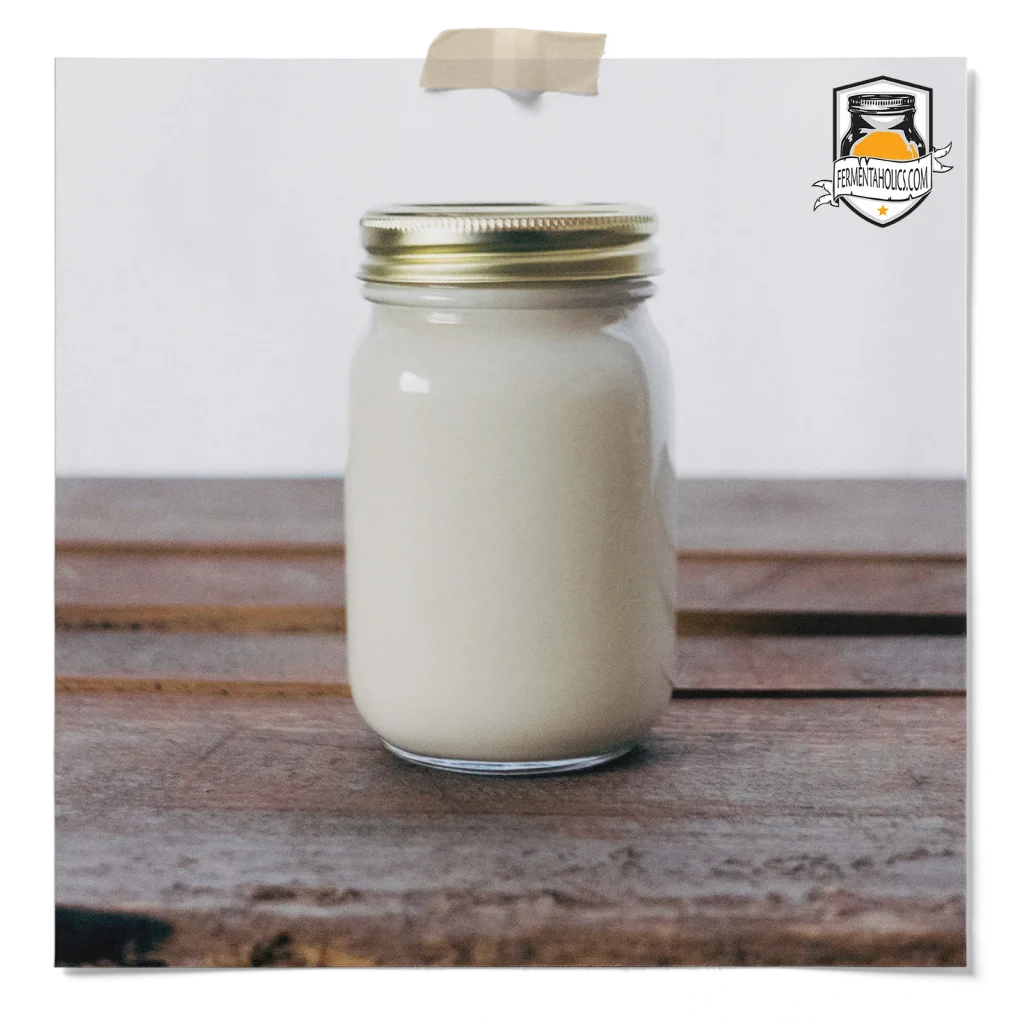
When you think about it, drinking curdled milk was a bold move in human evolution. And so it must have been some hardcore individual that decided this lumpy, curdled mass was worth ingesting and we are glad he or she did!
Milk kefir is a traditional Russian drink that is both unique in its recipe and robust in its richness and healthy gut benefits. Kefir is pronounced “Kuh-FEAR,” but it is also commonly pronounced “Kee-FUR.” Milk Kefir, at first glance, will probably remind you of a runny or thin yogurt. And for a good reason, milk kefir is very similar to yogurt but has a process and a flavor all of its own.

Well, it depends on what kind you’re talking about, there are two primary types: milk kefir and water kefir. So we’ll take an in-depth look at each and how they relate to each other. We’ll also look at the process of making it!
Water kefir and milk kefir are both fermented using a different starter culture of bacteria and yeast. This culture can either be a powdered starter culture or “grains.”. You use a milk kefir powder culture or milk kefir grains for milk kefir. For water kefir, as the name suggests, water kefir grains are used to start fermentation. It’s important to note that while called grains, they are not grains like barley or wheat but a culture of bacteria and yeast held together by a carbohydrate known as a polysaccharide. So, they are gluten-free. As pictured, these grains can look like little crystals or tiny glutinous cauliflower. Like other ferments, the culture in the grains consumes sugar and produces acid, carbon dioxide, and small amounts of ethanol.
Milk kefir is milk that is fermented at room temperature with either milk kefir powder culture or milk kefir grains for about a day. It has many health benefits, an exceptional flavor, and is tolerated well by those who are lactose intolerant. Compared to yogurt, it’s easier to make and has a broader spectrum of probiotics. Milk kefir grains, when cared for properly, can be used over and over again, making the grains sustainable and economical.
Extreme Reliability: Favored by commercial producers for its highly consistent results, milk kefir starter culture powder provides an exact blend of bacteria and yeast strains that ensure extremely predictable and fantastic results from batch to batch. It can be reused for several batches until a decrease in performance is noticed, at which point a fresh culture should be used.
Wild Culture: Milk kefir grains contain the necessary microbes to make milk kefir, but with a more diverse, wild culture that can be reused indefinitely when cared for properly.
Water kefir is a beverage made from fermenting sugar-water with water kefir grains. The result is a natural, light, and refreshing carbonated drink, the perfect alternative to soda. Water kefir, much like milk kefir, is much easier to make than yogurt, beer, or wine. Water kefir is made from sugar, water, and water kefir grains. It is fermented at room temperature for about 24-48 hours. Since water kefir is usually flavored with fruit, the flavoring options are endless. In addition to the many health benefits, it’s also well tolerated by people with diabetes. Water kefir grains can also be used over and over again, also making the grains sustainable and economical.
Kefir has been around in the Caucasian Mountains for hundreds of years. It is thought to originate with shepherds, who found that sometimes keeping fresh milk in a stomach bag would carbonate. Legend has it that the first kefir “grains” were a gift to Orthodox people from Mohammed, who instructed them on how to use the grains and forbade them from telling the secret to other cultures, or they would lose their “magic.” It remained a staple of the region for centuries; even Marco Polo writes about trying it in his many travels.
Milk Kefir was traditionally made in a sheep’s stomach with what are called kefir “grains.” Kefir is produced by fermentation of the “kefir” grains, which resemble cottage cheese or mini-cauliflowers, the size of wheat kernels. Inside, these grains live a symbiotic mixture of casein and gelatinous colonies. These colonies consist of saccharomyces kefir, torula kefir, leuconnostoc species, lactobacillus caucasicus, and lactic streptococci. That’s a mouthful, but the variety and teamwork of these various combined cultures in the grains are what make kefir unique in the world of cultured milk products. The bacteria and yeasts found in the grains consume the sugar and produce lactic acid, a tiny bit of ethanol, and carbon dioxide.

As with most fermented dairy, the microorganisms eat and change the sugars and other structures in the raw milk, producing new flavors and, in this case, carbonation. Also involved in the process is Lacto-fermentation, which is where the Lactobacillus converts naturally occurring sugars into lactic acid just like it does in other fermented foods like yogurt, pickles, and kombucha. This is the acid that acts as a natural preservative inhibiting the growth of harmful bacteria within the milk. And yet because of the variety of colonies in the grains, kefir is a powerhouse of probiotics compared to other cultured foods like yogurt.
Now true to its name, water kefir is kefir that uses… you guessed it: Water. The grains used for water kefir are slightly different from the milk kefir, but the process is still very much the same. It’s an excellent way for those who can’t do dairy to introduce probiotics into their diet.
Water kefir grains seem to have an endless variety of names and differ by region and country. Bottom line; if you have sugar, water, and the kefir culture, you’ve got a carbonated beverage, and the flavor profiles are endless.
Most stories you hear of where water kefir grains originated come out of Mexico. The tibicos culture, a popular culture used worldwide, naturally forms on the pads of the Opuntia cactus in crystalline form. These crystals can be reconstituted in a sugar-water solution and BAM; you have tibicos. Unlike the oral speculation of the milk kefir cultures, we have documentation in the late 1800s of water kefir grains being used to ferment prickly pear cactus juice in Mexico by a man named Lutz.
This culture loves sugar and is often used to not only introduce carbonation into drinks but to get that probiotic boost our American diet all too often lacks.
One thing to keep in mind when looking at what kefir grains you are going to use is whether or not they have been dried or not. Typical, traditional kefir grains are reusable, and like a sourdough starter, they can be used indefinitely when cared for properly. All you have to do is strain out the grains and put them in the appropriate liquid, culture for 12-48 hours, then transfer the grains to a new batch. But if you are not drinking kefir every day, grains can be kept for a few days in the refrigerator to slow down the bacteria till you need to use them again.
Dried grains are a little trickier. A tiny bit of the kefir made from powdered kefir starter can be saved and added to a fresh liquid to create a new batch of kefir, but usually, it can’t be re-cultured more than a few times before the bacteria begin to break down.
However, dry kefir can be quite handy if you want to be a more casual drinker, as it can be stored unrefrigerated for much more extended periods and allow you to make this tasty drink “on the fly” as it were.

Milk kefir or simply kefir is a fermented beverage that is typically made from milk. It is created by adding a cultured powder or kefir grains, which are a combination of bacteria and yeast, to milk and allowing it to ferment. Water kefir, on the other hand, is made by fermenting sugary water with water kefir grains. While both kefir and water kefir are fermented beverages, they differ in their base ingredients and the types of culture used for fermentation.
Milk kefir is made by introducing a kefir culture, which are a combination of bacteria and yeast, to milk. The grains initiate the fermentation process by consuming the lactose in the milk and converting it into lactic acid. This fermentation process results in the characteristic tangy flavor and the formation of probiotics in the kefir.
In many cases, lactose-intolerant individuals can tolerate kefir better than regular milk. The fermentation process of kefir helps to break down lactose, the primary sugar in milk, making it easier to digest. The beneficial bacteria and yeasts present in kefir contribute to the further breakdown of lactose. However, it is recommended to start with small amounts and observe personal tolerance as individual reactions may vary.
Yes, kefir can be made using non-dairy milk alternatives such as coconut milk, almond milk, or soy milk. The process is similar to making milk kefir with dairy milk. Simply introduce the kefir grains to the non-dairy milk and allow fermentation to occur. However, it’s important to note that the composition and taste of non-dairy kefir may differ from traditional dairy kefir.
Yes, kefir grains can be reused to make multiple batches of kefir. After straining the fermented kefir, the grains can be rinsed with non-chlorinated water and added to fresh milk or other liquid for the next fermentation cycle. With proper care and maintenance, kefir grains can be used indefinitely, continuously fermenting new batches of kefir.
Yes, milk kefir can be made with a grain less milk kefir culture powder.
